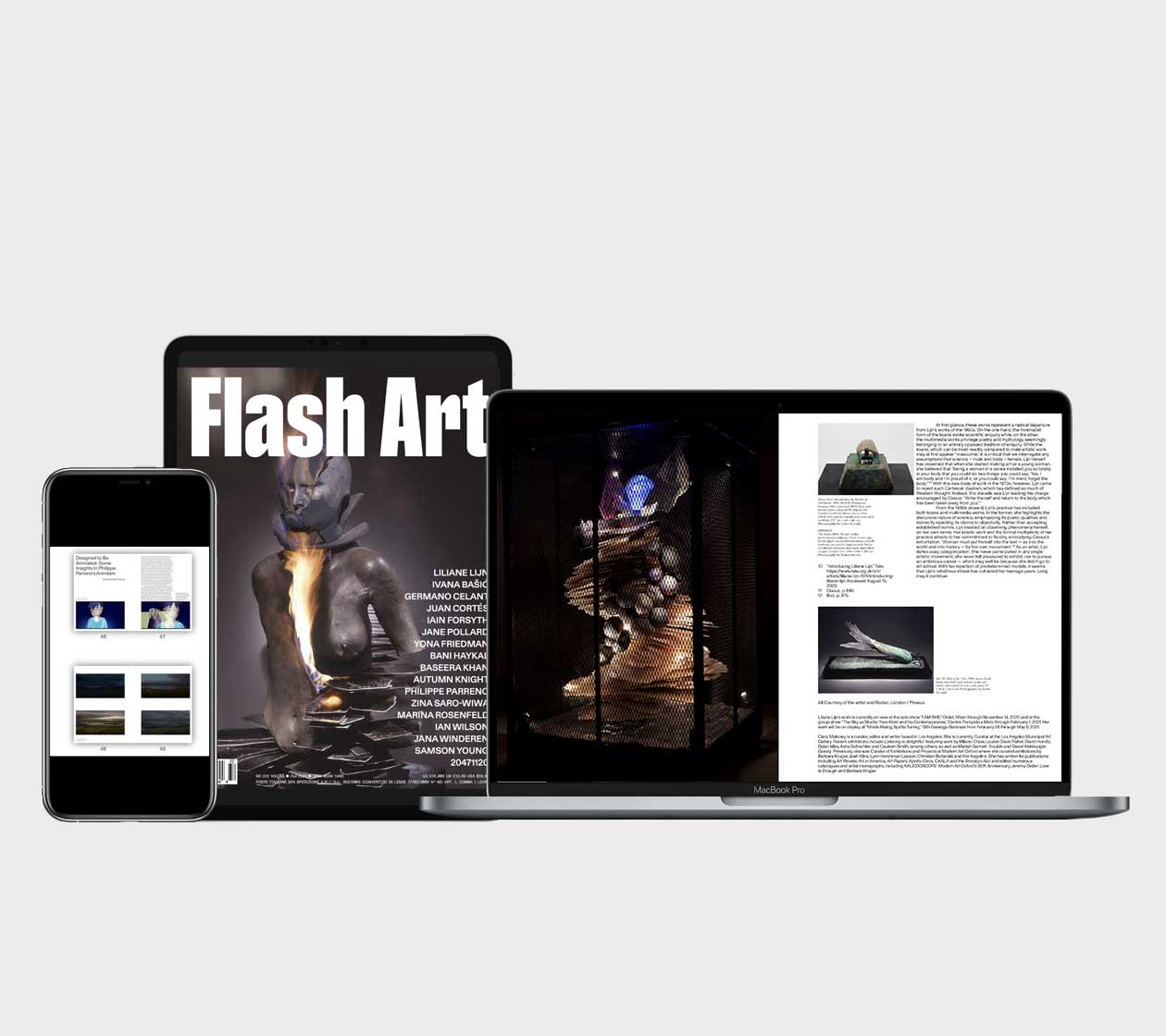“The Uncanny Valley” is Flash Art’s new digital column offering a window on the developing field of artificial intelligence and its relationship to contemporary art.

For several years I have investigated financial manipulation and secrecy within the art market. This work isn’t simply critique, as I have also envisioned improvements through new technology, economic models, and regulations. I have also taken direct action by attacking those parties responsible through my art practice and activism.
In 2020, I scraped ten years’ worth of auction records — more than 100,000 images and data that are now republished on Art-Derivatives.com and sold as actual digital financial derivatives. In order to expose the unregulated financialization of art, I superimposed the auction prices over the images from the sales and now offer them as inexpensive digital artworks that are sold to short the auction art market.
Art-Derivatives.com aims to disrupt financial speculation of works of art. Auction houses are rigged by manipulation and secrecy; therefore I think everyone should exploit their inflated prices to collectively provoke regulation. For this project I investigated the specifics of the art market to assemble a list of key practices in need of regulation. I use the revenues from the sales of my derivative works to fund a campaign that addresses financial speculation and secrecy, calling for more transparency and fair rules in the auction art market.
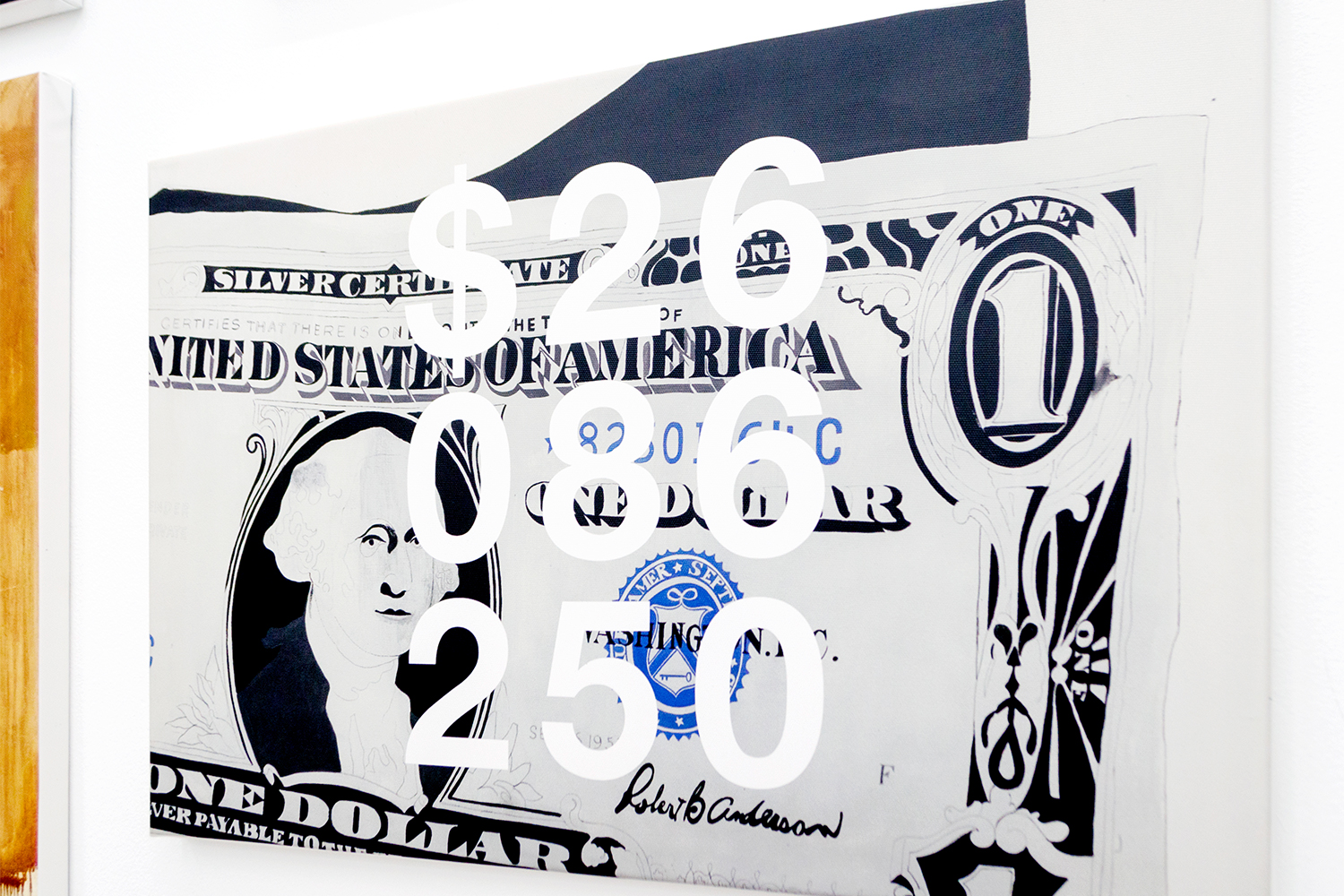
A year on from the initial launch of Art-Derivatives.com, the project has made international headlines, engaging hundreds of micro-collectors through the sale of digital art derivatives. To celebrate one year of Art-Derivatives.com I am now offering for sale a special series of one hundred derivatives from the infamous work by Beeple sold as an NFT in March 2021. The public can now buy one of these derivatives in order to support the project and subvert market manipulation.
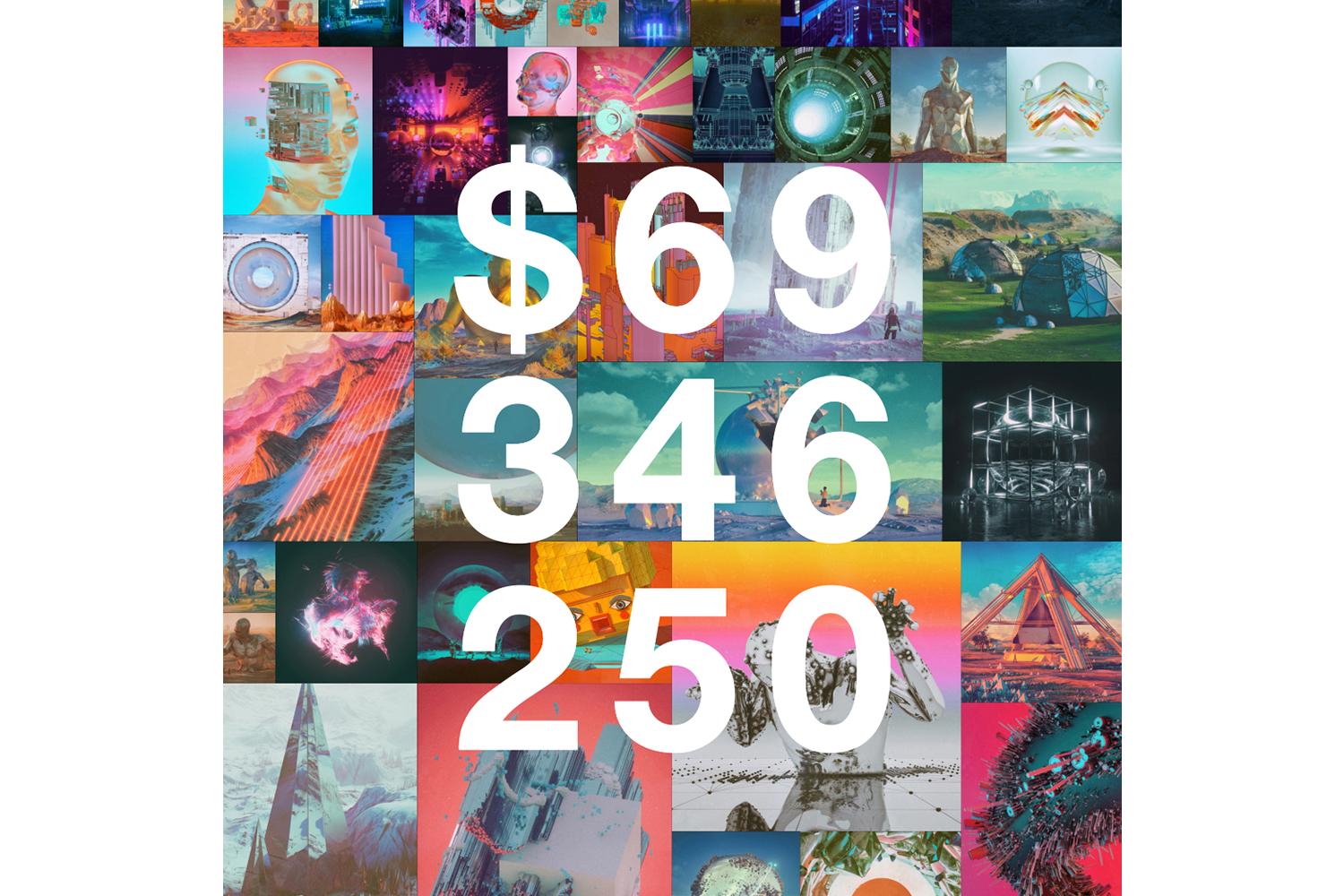
Anyone can join in this provocation simply by purchasing my inexpensive derivative artworks on Art-Derivatives.com in the form of high-resolution digital image files, signed as unique artworks but leaving intact the original artist’s credit. The price of each individual artwork for sale on Art-Derivatives.com is 0.00001 percent of the price or estimate publically reported by the auction house. Yet these derivative artworks stand to increase in value, to be resold at a higher price according to a sales contract — a financial future derivative vehicle — purposely designed to ensure that the value of each work increases. Following purchase, a digital document is automatically issued via email comprising a sales agreement and certification of authenticity signed by me and the buyer. These signatures and certifications are coded with cryptography and guarantee ownership, authenticity, and traceability of the artworks.

I am one of the first artists to have developed a method to authenticate digital artworks with cryptography, several years prior to the invention of the NFT format. My 2014 work Art Commodities applied research into smart contract technology in such a way as to create what Pau Waelder has termed “a radically different system, based on abundance instead of scarcity, and on sharing artworks instead of keeping a unique object at home or in a storage room.”1 This work not only predicted the wide spread of such technology in art, but also addressed those disrupted systems within the art market and their future financial and aesthetic reconfigurations. From the beginning, my concern has always been about how we channel financial flows generated by digital art in order to establish a more ethical market.
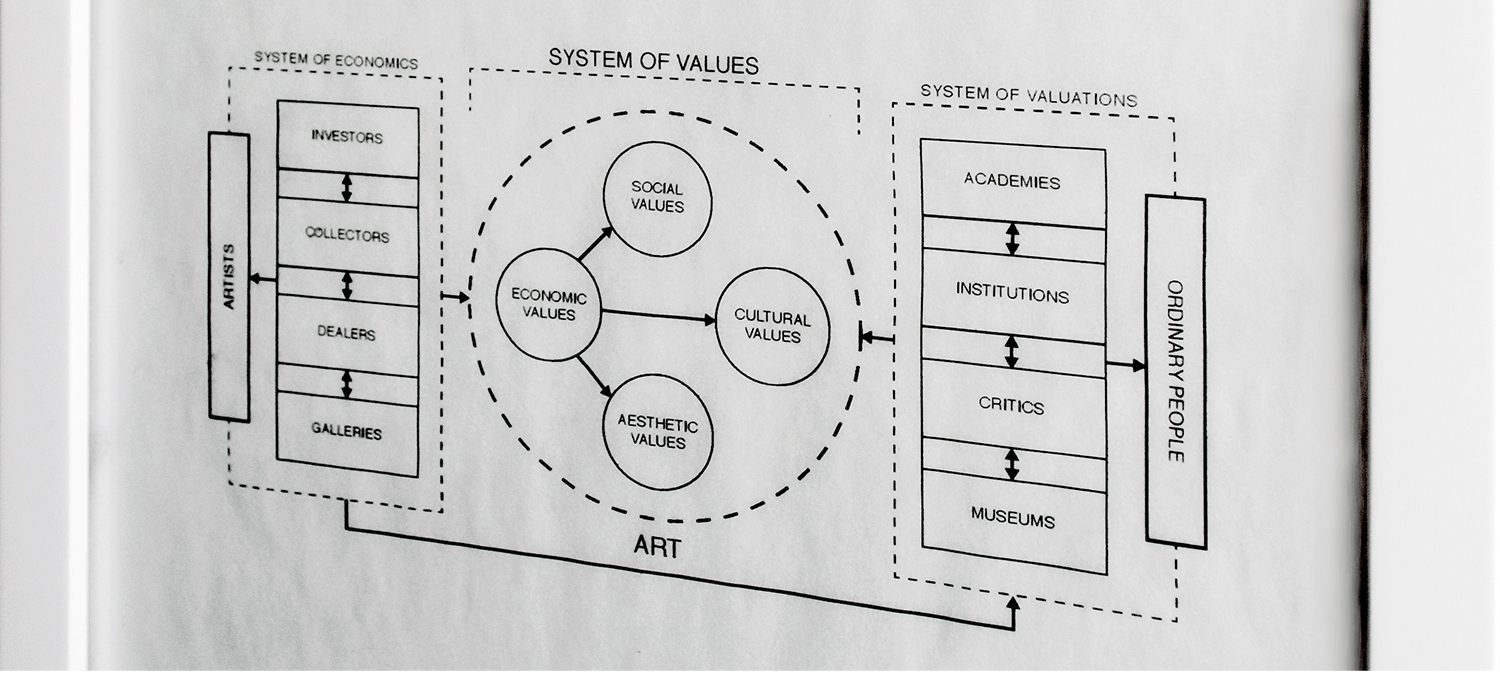
Lately, investments in digital art authenticated with cryptography have brought not only excitement but also a million-dollar market underpinned by a distinct lack of ethics. Given the current surge of interest in NFT crypto art on the blockchain, the need for transparency and fairness is more urgent than ever. Anonymous sales of works by artists of opaque identity use cryptocurrencies — untaxed and inflated in value — in order to secure exorbitant prices.
Meanwhile, this year the real economy of the art world has struggled as never before, with art venues closing, museums laying off staff, art fairs disappearing, and outlets and artists losing revenue streams. Yet the art market of speculators has remained largely unaffected, merely pivoting online and in the process rendering the immaterial and abstract nature of art’s financialization even more speculative. We have seen record online sales in the auction houses made remotely by anonymous buyers and sellers— who transfer millions without even unwrapping the artworks — all taking place behind screens, phones, and locked doors, and so with less scrutiny than ever.
Online auctions have now increased market secrecy to a point where objects that don’t sell are even listed as “withdrawn” rather than “unsold.” Such opacity of course also stands to affect the sale of derivatives on Art-Derivatives.com that bet against the future values of artworks. That art auctions must become more transparent is an urgent priority, one also endorsed by the US Congress in 2020 following a newly infamous money-laundering scandal.

After all, the substance of digital artworks — whether NFT, JPG, or DVD — doesn’t change, much like physical artworks in bronze, canvas, or banana. This is a problem of price, not one of art. And even when one considers the question of financial value, the real economy remains largely ignored. Only the figures make people blink. Nor is it a matter of taste; it is merely a matter of financial fraud, increasing inequality, and cultural corruption. We must take action.
I am currently designing legal complaints as well as petitions to be submitted to the Commodity Futures Trading Commission (US) and to the Financial Conduct Authority (UK). This campaign is directly inspired by my research into auction houses’ consistently malign business practices. I propose the following list of urgent and innovative regulations for the secondary art market.
• Establish a 10% tax on auction house profits and the resale of artworks in order to generate revenue in support of non-profit art institutions and the careers of younger artists and art professionals.
• Scrutinize conflicts of interest between auction houses and bidders, third-party guarantees, and buyers. Investigations into shady agreements arranged by auction houses will reveal the actual financial values of artworks.
• Increase the transparency of international transactions to be more in line with recent EU and UK regulations requiring the verification of the identity of buyers and sellers. Currently such transparency can be avoided by arranging auctions in jurisdictions favorable to financial secrecy.
• Call on the US Congress to amend the Bank Secrecy Act to include transactions involving high-value art via both public auction and private sale. Currently the secondary art market lacks the formal regulatory requirements that the Bank Secrecy Act imposes on financial institutions.
• Issue fines for “transfer mispricing” in the art market, similar to other industries. The values of artifacts must be consistent in the chain of production throughout all international financial transactions and not altered for tax avoidance and/or value inflation.
• Ban the sale of works by artists without a history of exhibitions in art institutions. Fabricated artists such as Beeple, Doodle, or Obvious are commercial operations created by auction houses in order to make up false value estimates for the purpose of financial speculation and to defraud collectors. Moreover, these deceptive marketing operations damage the primary market and affect the careers of hard-working art professionals.
• Break the monopoly of auction houses in the secondary markets, thus allowing greater performance, competition, and platform diversity in the resale of artworks. A small number of auction houses currently monopolize the market, stifling innovation and fostering unethical, inaccessible, and unregulated practices.
• Ensure that estimated values of artworks are validated by independent commissions of art historians and professionals before they go to auction. Estimates fixed by auction houses are a major conflict of interest, similar to ratings manipulations by financial institutions.
• Give artworks a unique ID with a system of classification that can be entered into an international inventory. This would allow the tracking of transactions and shipments across borders, helping mitigate forgery, tax evasion, and falsified ownership.
• Ban the flipping of artworks within a short time span. Establish regulations that would freeze the reselling of artworks for a minimum of a few years.
• Apply resale royalties and artist’s rights contracts on an international basis, in keeping with the EU directive for artists to receive royalties when their works are resold at auction.
• Establish ethical guidelines in art journalism and art criticism for reporting art auction records and sales. Journalists and critics need to address the speculative and manipulative factors underpinning sales, rather than merely reporting the amounts of transactions and positioning them as endorsements of the quality of the art sold.
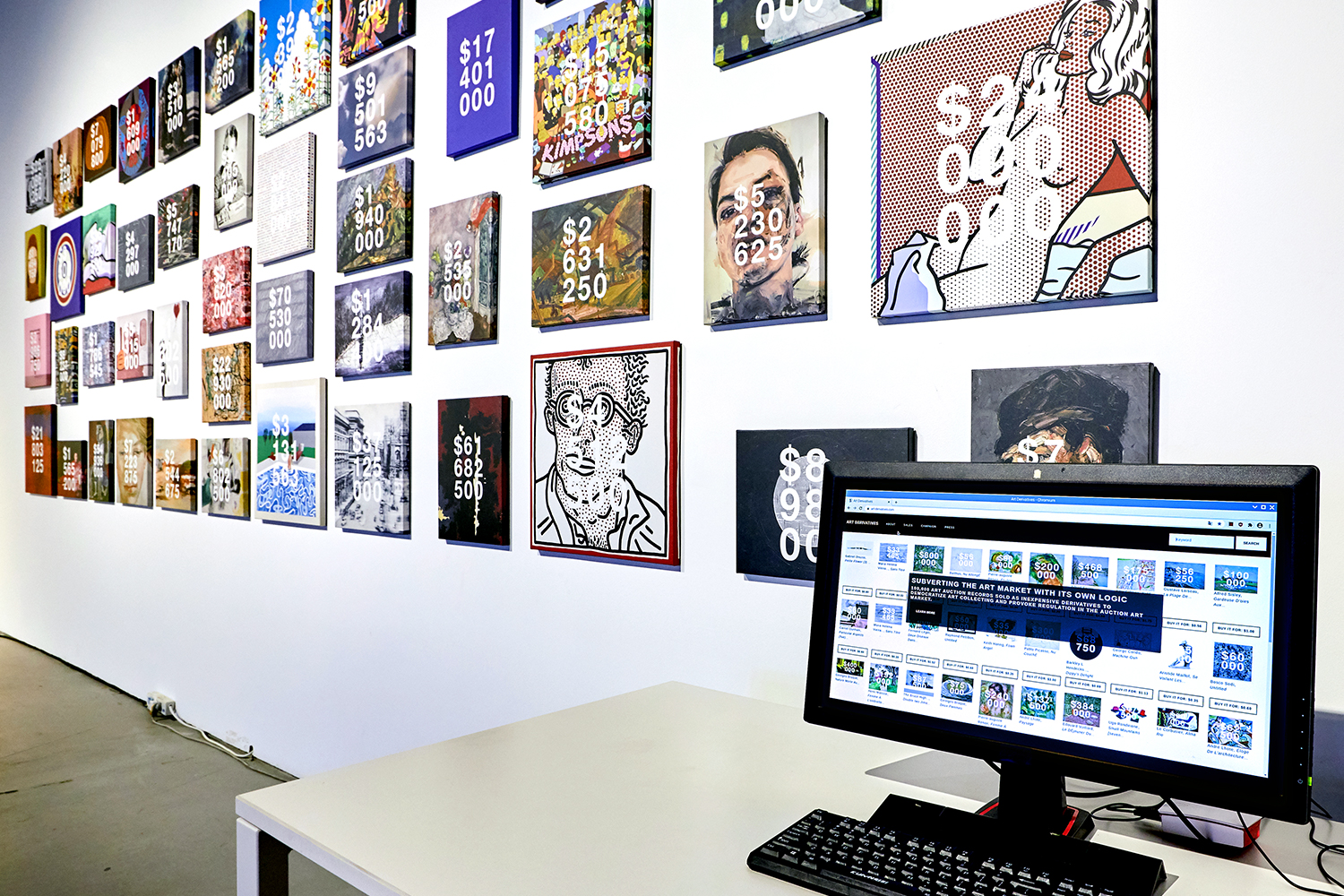
If you can help with this campaign in any way, please get in touch with Paolo Cirio.

